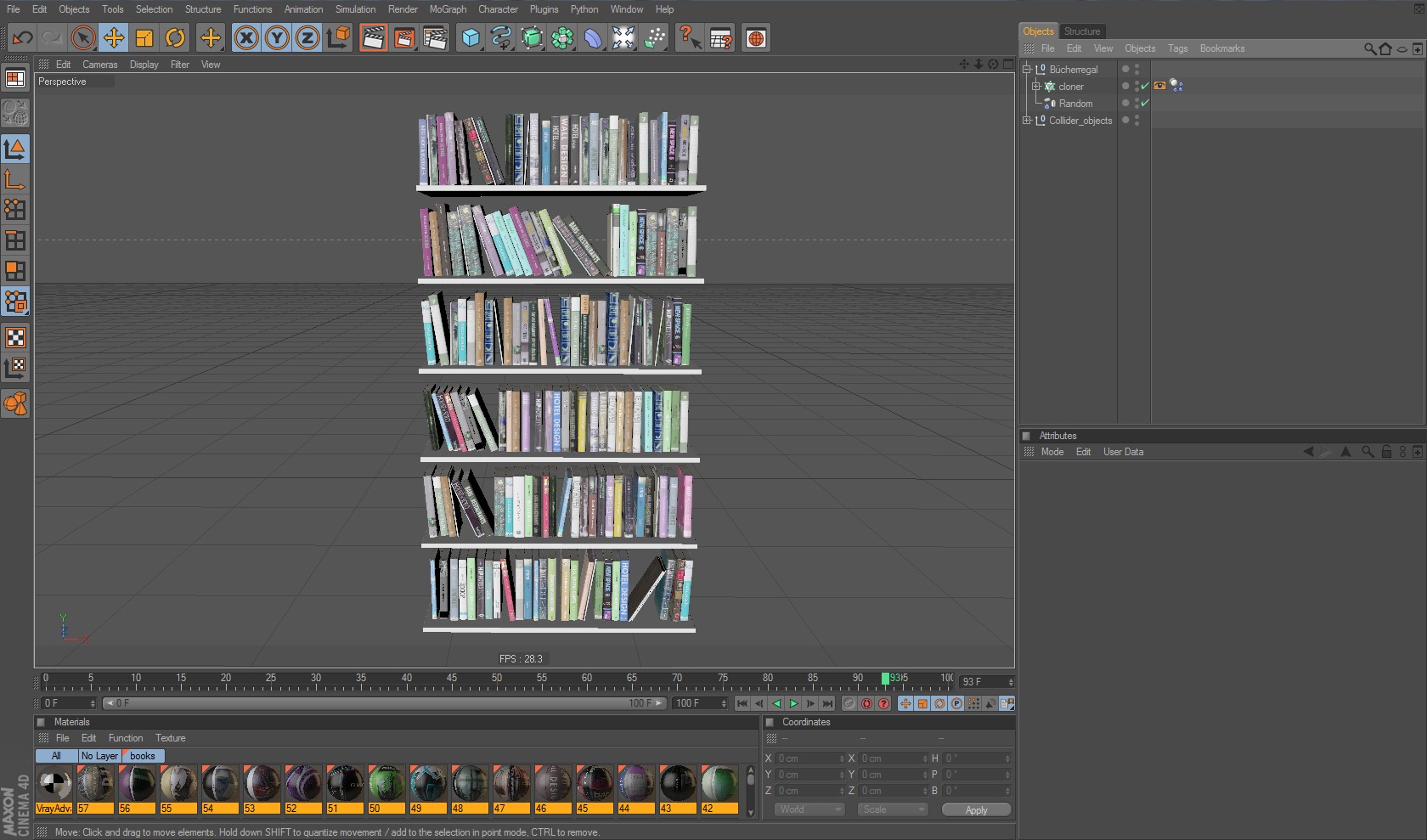
- CINEMA 4D R12 ANIMATION TUTORIAL MAC OS X SNOW LEOPARD
- CINEMA 4D R12 ANIMATION TUTORIAL HOW TO RENDER THE
It replaces all previous variants, including BodyPaint 3D, and includes all features of the past 'Studio' variant. As of R21, only one version of Cinema 4D is available. In this new Cinema 4D animation tutorial series we explore every facet of. Regardless of which tool you use, they all require a fundamental base knowledge of keyframe animation to control them. Maxons C4D suite offers a range of different methods for animating objects such as physics, mograph and particles. Cinema 4D R19 Keyframe Animation.
Cinema 4D R12 Animation Tutorial How To Render The
Software required: CINEMA 4D R12 and up.His tutorial also showed how to render the volumes with Redshift. By the end of this tutorial, you will have the foundation required animate comfortably in CINEMA 4D. We will learn techniques for seamlessly cycling animation, and work with Xpresso, its node-based expression editor. Instructional Quicktime Video Tutorials covering the latest in CINEMA 4D R12.We will explore animation layers and how to modify animation in the timeline. The difference is now only in licensing.MAXON understands that making a transition into 3D graphics and animation. There is no technical difference between commercial, educational, or demo versions.
With v4, however, Maxon began to develop the application for Windows and Macintosh computers as well, citing the wish to reach a wider audience and the growing instability of the Amiga market following Commodore's bankruptcy.On Linux Cinema 4D is available as a commandline rendering version.From R12 to R20, Cinema 4D was available in four variants. The "Lite" variant is dependent on After Effects CC, needing the latter application running to launch, and is only sold as a package component included with AE CS through Adobe.Initially, Cinema 4D was developed for Amiga computers in the early 1990s, and the first three versions of the program were available exclusively for that platform. This is part of a partnership between the two companies, where a Maxon-produced plug-in, called Cineware, allows any variant to create a seamless workflow with After Effects. "Lite" acts as an introductory version, with many features withheld.


Release of Cinema 4D V2.1 and V3.0 for Amiga. Release of Cinema 4D V1.5 and V2 for Amiga. FastRay (Cinema 4D's first name) is released for the Amiga. Christian and Philip Losch enter their ray-tracer into Kickstart magazine's monthly programming contest, and win the competition. Visualize (adds Virtual Walkthrough, Advanced Render, Sky, Sketch and Toon, data exchange, camera matching) PyroCluster (simulation of smoke and fire effects)
The development of a production-level version begins, integrating the latest technologies. The first multi-processor version of Cinema 4D is made available. Cinema 4D V4 for Windows, Alpha NT, Macintosh and Amiga is released. New programmer team begins development of a completely new, operating-system-independent architecture.
MAXON integrates the shader set Smells like Almonds from bhodiNUT. PyroCluster and Dynamics modules are introduced. BodyPaint 3D is made available as an integrated version for Cinema 4D, and as a standalone version for other 3D packages. Cinema 4D GO V5 and Cinema 4D NET are introduced. The first production-worthy version is released — Cinema 4D XL V5.
Service update R10.111 released to address several reported problems, such as stability. Service update R10.1 is released in March, in response to bug feedback provided to Maxon by users and testers. Cinema 4D becomes the first professional 3-D graphics application released as a Universal Binary for Apple's new Intel-powered Macs (even before Apple Universal Binary versions of its own software are released). Cinema 4D R10 with integrated BodyPaint 3D is released. The new modules are Advanced Render, PyroCluster, MOCCA and Thinking Particles.
Non-Linear Animation has been completely reworked. A new implementation of Global Illumination (included in the Advanced Render module) offers a higher quality than that of the old version, and much improved animation support. Cinema 4D supports 64-bit architecture on Apple G5 and Intel-powered Macs.
An enhanced Picture Viewer that will allow a history of renders, RAM previews, and A/B swiping. Also greatly improved Subpolygon Displacement and Area Shadows efficiency and speed using Multi-Threading. Anti-Aliasing methods to choose from are Scanline, Ray-Tracing, and Hybrid (which uses both to best optimize quality vs. Bucket rendering reduces render times and manages clone instancing and memory management much more efficiently. Introduces MoGraph 2 (which includes MoDynamics , PolyFX, and MoSplines)
Cinema 4D R12 Animation Tutorial Mac OS X Snow Leopard
Fully compatible with Mac OS X Snow Leopard (10.6) and Windows 7. It can also export multiple cameras at once. Also, exports clones and XRefs to Motion and After Effects, as well as the ability to bring in solids for mapping video onto 3D surfaces. Full 3D support for Apple Motion, and improved support with Adobe After Effects.
Support for IES lights and physically correct lighting. Double precision calculation introduced and true units. Linear workflow introduced with correct display in OGL. Many minor improvements like the Shaders and Materials. Dynamics has been improved (complex physics engine) Other new features include a new Camera Shader which will map any camera view onto any surface, improved MoGraph Effectors, and other general improvements and refinements.
Brick Shader enhancements. New, accurate Sub-Surface Scattering shader (SSS). (Enhanced cloning and extrusions Advanced selection tools new optimized HyperNURBS weighting algorithm for cleaner topology and sharper but smooth creases Axis toggle Auto Tweaking Easy, intuitive Snapping Variable Speed Scaling Better ClothNURBS Extrusion)
Cinema 4D R14 released (September 4, 2012) New Import/Export features (After Effects Integration FBX Import/Export supports 2010, 2011, and 2012 Multi-Channel OpenEXR Enhanced Sound Format support including AIF, MP3, and AAC Collada 1.5 BodyPaint 3D support for Maya UVs) All-new External Referencing System for XRefs. Improved Interface and Workflow.
Create natural dynamic camera motion. Blend between different cameras. Morph camera and motion camera. Integrate 3D element into photographs.


 0 kommentar(er)
0 kommentar(er)
